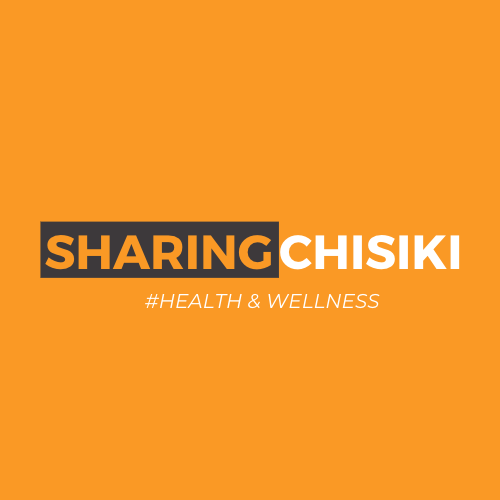Maximizing Your Cardio Routine for Better Results is essential when it comes to improving cardiovascular fitness. Cardio exercises are an effective way to achieve this goal by improving heart health, burning calories, and increasing overall endurance. However, despite putting in time and effort, many people struggle to see the results they desire. In this article, we will explore strategies that can help you optimize your cardio routine and achieve better results.
Table of Contents
- Introduction
- Setting Realistic Goals
- Choosing the Right Exercises
- Low-Intensity Steady State (LISS) Cardio
- High-Intensity Interval Training (HIIT)
- Resistance Training
- Varying Your Routine
- Fueling Your Body
- Allowing for Rest and Recovery
- Tracking Your Progress
- Conclusion
- FAQs
Introduction
Understanding the Benefits of Cardiovascular ExerciseBefore we dive into the ways to maximize your cardio routine, let's first understand the benefits of cardiovascular exercise. Cardiovascular exercise has numerous benefits, including:
- Improving heart health
- Boosting metabolism
- Burning calories
- Improving endurance
- Reducing the risk of chronic diseases such as diabetes and heart disease
Setting Realistic Goals
When setting your fitness goals, it's essential to keep them realistic and attainable. While it's great to have ambitious goals, setting unrealistic expectations can lead to frustration and disappointment, which can negatively affect your motivation. Instead, consider your current fitness level and work towards gradual improvement over time. This will not only increase your chances of success but also make the process more enjoyable and sustainable in the long run.
Choosing the Right Cardio Exercise
When it comes to choosing the right cardio exercise, it can be overwhelming with so many options available. However, taking the time to consider your fitness level, personal preferences, and any health concerns can help you make the best decision for your body and your goals.
If you're new to cardio exercise, it's important to start slowly and gradually increase the intensity and duration of your workouts. Consider low-impact exercises such as walking, cycling, or swimming to avoid putting excessive stress on your joints. On the other hand, if you're already active and looking for a more challenging workout, high-impact exercises such as running or kickboxing may be a good choice for you.
When selecting a cardio exercise, it's important to also consider your personal preferences. If you dread going to the gym, for example, find an outdoor activity like hiking or dancing that you enjoy. This will not only make your workout more enjoyable but increase your chances of sticking with it long-term.
Lastly, it's important to consider any health concerns you may have. If you have an injury or chronic condition, consult with your doctor or a qualified fitness professional to determine which exercises are safe and effective for you.
Overall, choosing the right cardio exercise requires careful consideration of your fitness level, personal preferences, and health concerns. With the right exercise, you can improve your cardiovascular health, burn calories, and achieve your fitness goals.
Incorporating High-Intensity Interval Training (HIIT)
Incorporating High-Intensity Interval Training (HIIT) into your cardio routine can help maximize your results. HIIT involves short bursts of intense activity followed by periods of rest or low-intensity activity. HIIT has been shown to improve cardiovascular health, increase metabolism, and burn more calories than traditional cardio exercises.To incorporate HIIT into your cardio routine, start with a warm-up of 5-10 minutes of low-intensity exercise such as jogging or cycling. Next, perform 30 seconds of high-intensity exercise such as sprinting, followed by 30 seconds of rest or low-intensity exercise. Repeat this pattern for 10-20 minutes, and finish with a cool-down of 5-10 minutes of low-intensity exercise.
Adding Resistance Training
Resistance training can help improve your cardio routine by building lean muscle mass, which in turn increases your metabolism. Incorporating resistance training into your cardio routine can help maximize your results and improve overall fitness. Consider adding bodyweight exercises, weightlifting, or resistance bands to your routine.To add resistance training to your cardio routine, start with a warm-up of 5-10 minutes of low-intensity exercise. Next, perform 1-3 sets of 8-12 repetitions of resistance exercises such as squats, lunges, push-ups, or bicep curls. Rest for 30-60 seconds between sets, and finish with a cool-down of 5-10 minutes of low-intensity exercise.
Varying Your Routine
Varying your cardio routine can help prevent boredom and plateauing. Consider changing up your exercise routine by trying different exercises, increasing the intensity, or adding new equipment. Varying your routine can help maximize your results and keep your workouts interesting.To vary your cardio routine, consider trying new exercises such as jump rope, stair-climbing, or rowing. Increase the intensity of your workouts by adding more resistance or increasing the speed or duration of your exercises. Try new equipment such as kettlebells, medicine balls, or resistance bands to add variety to your routine.
Fueling Your Body
When it comes to maximizing your cardio routine, fueling your body with the right nutrients is crucial for optimal performance. A balanced diet that includes carbohydrates, protein, and healthy fats can provide the energy you need to power through your workouts. Carbohydrates are the primary source of fuel for your muscles, while protein helps repair and rebuild muscle tissue. Healthy fats, such as those found in nuts, seeds, and avocados, can provide long-lasting energy and support overall health.
In addition to proper nutrition, staying hydrated by drinking plenty of water throughout the day is essential for optimal performance. Dehydration can lead to fatigue, dizziness, and decreased endurance. It's recommended to drink at least eight glasses of water per day, and even more during exercise.
Allowing for Rest and Recovery
While it may be tempting to push yourself to the limit with your cardio routine, rest and recovery are just as important as the workout itself. Proper rest and recovery can help prevent injury, improve performance, and prevent burnout. Incorporating rest days into your routine can give your muscles time to recover and repair. It's also essential to listen to your body and take a break when you feel fatigued or sore.
In addition to rest days, active recovery can also be beneficial for maximizing your cardio routine. Active recovery can include low-intensity exercises, such as walking or yoga, to help promote blood flow and reduce muscle soreness. Foam rolling and stretching can also be helpful in promoting recovery and preventing injury.
Tracking Your Progress
Tracking your progress is essential for staying motivated and seeing the results of your hard work. Keeping track of your workouts by recording the duration, intensity, and type of exercise can help you monitor your progress and make adjustments to your routine as needed. It's also helpful to track other factors, such as weight, body measurements, and energy levels, to see the improvements in your overall health and fitness.
There are many ways to track your progress, including using a fitness app, writing in a workout journal, or using a fitness tracker. By tracking your progress, you can stay motivated and celebrate the small victories along the way.
Conclusion
Maximizing your cardio routine for better results requires a multifaceted approach, including setting realistic goals, choosing the right exercises, incorporating HIIT and resistance training, varying your routine, fueling your body, allowing for rest and recovery, and tracking your progress. By implementing these strategies, you can improve your cardiovascular health, burn more calories, and achieve the results you desire. Remember to listen to your body, be patient, and stay consistent in your efforts for long-term success.
FAQs
How often should I do cardio workouts to see results?It's recommended to do cardio workouts at least 3-5 times per week for optimal results.
Can I still do cardio if I have joint pain?
Yes, there are low-impact cardio exercises such as swimming and cycling that can be easier on your joints.
Is it necessary to incorporate resistance training into my cardio routine?
While not necessary, incorporating resistance training can help improve your overall fitness and maximize your results.
What should I eat before a cardio workout?
Eating a small snack that includes carbohydrates and protein can help provide the energy you need for your workout.
How do I know if I'm overtraining and need more rest?
Listen to your body and pay attention to signs of fatigue, soreness, and decreased performance. Incorporating rest days into your routine and allowing for proper recovery can help prevent overtraining.
Read more: The Ultimate Guide to At-Home Workouts















